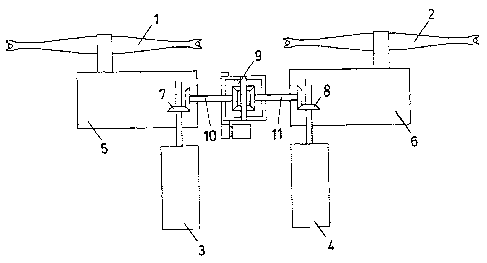Some of the information on this Web page has been provided by external sources. The Government of Canada is not responsible for the accuracy, reliability or currency of the information supplied by external sources. Users wishing to rely upon this information should consult directly with the source of the information. Content provided by external sources is not subject to official languages, privacy and accessibility requirements.
Any discrepancies in the text and image of the Claims and Abstract are due to differing posting times. Text of the Claims and Abstract are posted:
| (12) Patent Application: | (11) CA 2544282 |
|---|---|
| (54) English Title: | MOVING SYSTEM FOR A CABLEWAY PLANT COMPRISING TWO HAULING CABLES |
| (54) French Title: | SYSTEME MOBILE POUR INSTALLATIONS DE CABLES AERIENS COMPRENANT DEUX CABLES DE TRACTION |
| Status: | Deemed Abandoned and Beyond the Period of Reinstatement - Pending Response to Notice of Disregarded Communication |
| (51) International Patent Classification (IPC): |
|
|---|---|
| (72) Inventors : |
|
| (73) Owners : |
|
| (71) Applicants : |
|
| (74) Agent: | MARKS & CLERK |
| (74) Associate agent: | |
| (45) Issued: | |
| (22) Filed Date: | 2006-04-20 |
| (41) Open to Public Inspection: | 2006-11-03 |
| Availability of licence: | N/A |
| Dedicated to the Public: | N/A |
| (25) Language of filing: | English |
| Patent Cooperation Treaty (PCT): | No |
|---|
| (30) Application Priority Data: | ||||||
|---|---|---|---|---|---|---|
|
Simplified regulation and balancing system applicable
to cableway plants, of the continuous or to-and-fro
type, equipped with two hauling cables functioning in
parallel.
In a system according to the invention, the two cables
are moved by distinct pulleys with separate winches;
the kinematic chains of the two winches however are
connected to each other by a device which is
structurally similar to a car differential, whose outer
box is kept blocked during normal functioning. In this
way, the two winches are mechanically constrained and
can rotate only at the same speed.
By rotating the differential box with an external
system, a corresponding difference in the rotation rate
is actuated between the two motor shafts; the rotation
can take place, for example, with a small balancing
motor-reducer which activates a toothed crown integral
with the box.
Note: Claims are shown in the official language in which they were submitted.
Note: Descriptions are shown in the official language in which they were submitted.

2024-08-01:As part of the Next Generation Patents (NGP) transition, the Canadian Patents Database (CPD) now contains a more detailed Event History, which replicates the Event Log of our new back-office solution.
Please note that "Inactive:" events refers to events no longer in use in our new back-office solution.
For a clearer understanding of the status of the application/patent presented on this page, the site Disclaimer , as well as the definitions for Patent , Event History , Maintenance Fee and Payment History should be consulted.
| Description | Date |
|---|---|
| Application Not Reinstated by Deadline | 2012-04-20 |
| Time Limit for Reversal Expired | 2012-04-20 |
| Inactive: Abandon-RFE+Late fee unpaid-Correspondence sent | 2011-04-20 |
| Deemed Abandoned - Failure to Respond to Maintenance Fee Notice | 2011-04-20 |
| Application Published (Open to Public Inspection) | 2006-11-03 |
| Inactive: Cover page published | 2006-11-02 |
| Inactive: First IPC assigned | 2006-08-03 |
| Inactive: IPC assigned | 2006-08-03 |
| Inactive: IPC assigned | 2006-08-03 |
| Application Received - Regular National | 2006-05-29 |
| Letter Sent | 2006-05-29 |
| Inactive: Filing certificate - No RFE (English) | 2006-05-29 |
| Abandonment Date | Reason | Reinstatement Date |
|---|---|---|
| 2011-04-20 |
The last payment was received on 2010-03-22
Note : If the full payment has not been received on or before the date indicated, a further fee may be required which may be one of the following
Patent fees are adjusted on the 1st of January every year. The amounts above are the current amounts if received by December 31 of the current year.
Please refer to the CIPO
Patent Fees
web page to see all current fee amounts.
| Fee Type | Anniversary Year | Due Date | Paid Date |
|---|---|---|---|
| Registration of a document | 2006-04-20 | ||
| Application fee - standard | 2006-04-20 | ||
| MF (application, 2nd anniv.) - standard | 02 | 2008-04-21 | 2008-03-17 |
| MF (application, 3rd anniv.) - standard | 03 | 2009-04-20 | 2009-03-26 |
| MF (application, 4th anniv.) - standard | 04 | 2010-04-20 | 2010-03-22 |
Note: Records showing the ownership history in alphabetical order.
| Current Owners on Record |
|---|
| HIGH TECHNOLOGY INVESTMENTS B.V. |
| Past Owners on Record |
|---|
| FERRUCCIO LEVI |